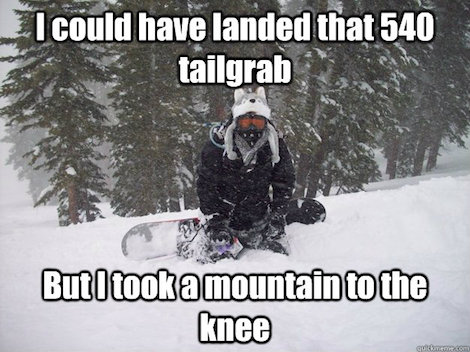
Sault Ste. Marie delivers some of the finest winter activities and experiences available in Ontario.
One marque activity available to Saultites is the ability to ski and snowboard on pristine slopes and trails located within the region.
With Searchmont Resort, the Hiawatha Highlands and Stokely Creek Lodge so easily accessible, the Safe Communities Partnership recommends that everyone enjoy a fun-filled day of cross-country or downhill skiing and snowboarding this winter.
To ensure that all skiers and snowboarders – from beginner to advanced – can fully enjoy their experience, we want to provide readers with proactive safety and injury prevention strategies.
1. Use well-maintained equipment that is appropriate for your size and skill level.
If you don’t own your own skis, bindings, and boots, avoid borrowing them from a friend and instead rent these pieces from a reputable ski shop or resort.
Professionals at the ski shop or resort will adjust and tune the equipment to your specific size, decreasing the chances of equipment related injuries.
Searchmont Resort offers skis, snowboards, snowshoes and helmets for rental at their equipment shop, and they have trained staff available to ensure that the equipment you use is fitted for your size.
2. Always wear a helmet that is specifically designed for skiing and snowboarding.
Regardless of age and skill-level, all skiers and snowboarders must wear a Canadian Standards Association approved ski and snowboard helmet to avoid head injuries.
It is estimated that nearly 50 percent of all skiing and snowboarding head injuries can be prevented by wearing a helmet.
3. Prepare for changing weather conditions by wearing layers of warm clothing and windproof outerwear.
Thermal underwear and socks will provide a warm base layer that your outer layers can fit over easily.
Wearing layers of fleece or sweaters made from wool or synthetic fabrics will keep you warm and won’t stay damp and cold if the material gets wet.
Jackets and ski pants should include many pockets to store gear easily, and should be windproof and water-resistant.
4. Stretch and warm up your muscles before hitting the slopes.
Skiing and snowboarding requires a wide range of sporadic movements, testing the balance and strength of its participants.
Stretching all of the major muscle groups, including the legs, core and back helps to prepare skiers and snowboarders for the strenuous activity they will take part in.
5. If you are a beginner, register for a lesson with a certified instructor.
Searchmont Resort has snow school programs offering lessons in private and group sessions.
New skiers and snowboarders will learn the basics of the sport and receive professional instruction to lessen their chances of unintended injuries.
6. Practice standard safety procedures and avoid risky behavior when using the chair lift.
When riding the chair lift, sit as far back as possible and avoid leaning forward and swinging the chair.
At the top of the lift, clear the unloading area quickly to ensure that other riders can unload safely.
Throughout the process, follow the instructions of the operator and remain aware of your surroundings.
7. Ski in groups of three or more, especially if venturing into difficult terrain and backcountry areas.
Particularly important for cross-country skiers, skiing in groups of three or more ensures that if someone is injured, once person can stay with the victim while the other goes for help.
8. Know your ability and ski in designated areas that match your skill level
Searchmont Resort offers a variety of runs and trails for a range of skill levels and abilities.
Searchmont recommends that new skiers and snowboarders begin by practicing on the “Learning Centre Poma”, and once they are comfortable with their abilities, move onto “The Main” to enjoy the sport at a beginner’s pace.
9. Rest as required to decrease the chances of muscle and joint strains and sprains.
Skiing and snowboarding are demanding activities, both physically and mentally.
Beginners should schedule regular rest intervals to catch their breath and recuperate, while more advanced skiers and snowboarders should rest when they feel tired to avoid potential accidents due to fatigue.
10. Throughout the day, stay hydrated and nourished.
Drink plenty of water throughout the day to stay energized and ward off dehydration.
Skiers and snowboarders burn plenty of calories, so eat a healthy breakfast before hitting the slopes and pack snacks to eat throughout the day, or plan to eat at Searchmont Resort’s eatery.
The Safe Communities Partnership hopes that everyone takes the opportunity to enjoy an exciting, injury-free day of skiing or snowboarding this winter season.
See you on the slopes!
Nicolas Turco – Strategic and Human Resources Coordinator
Written on behalf of Sault Ste. Marie Safe Communities Partnership